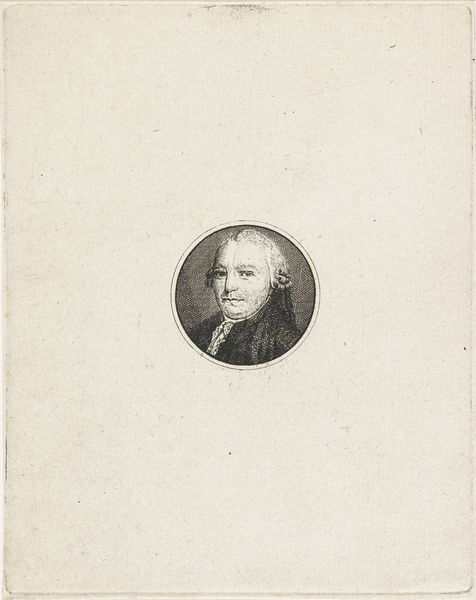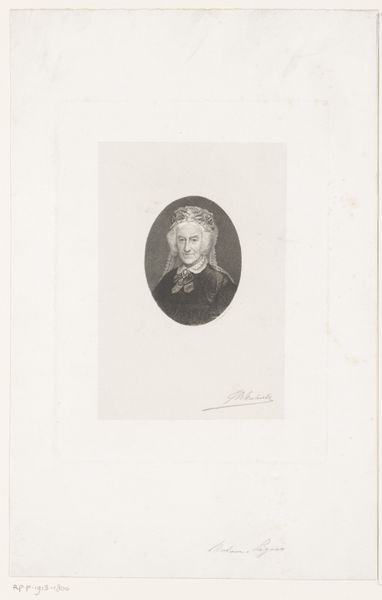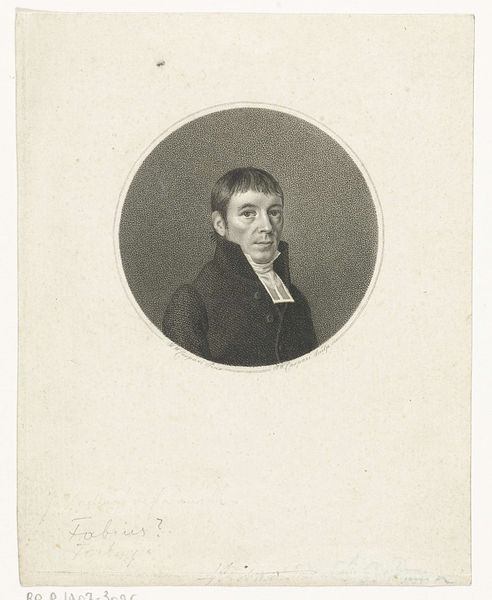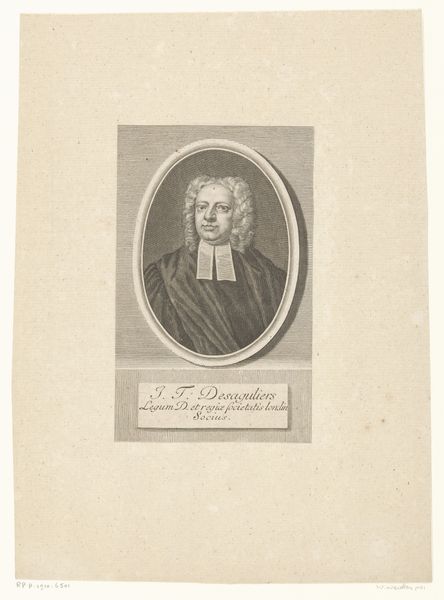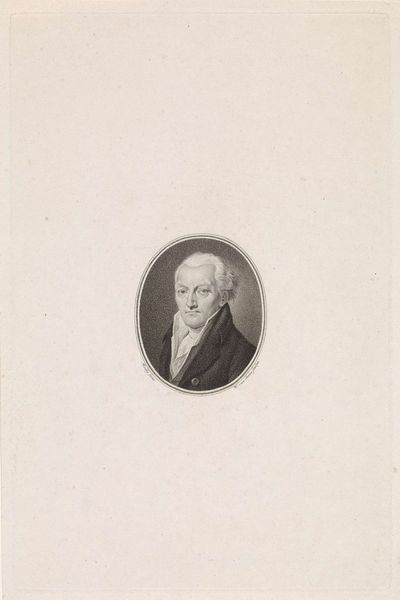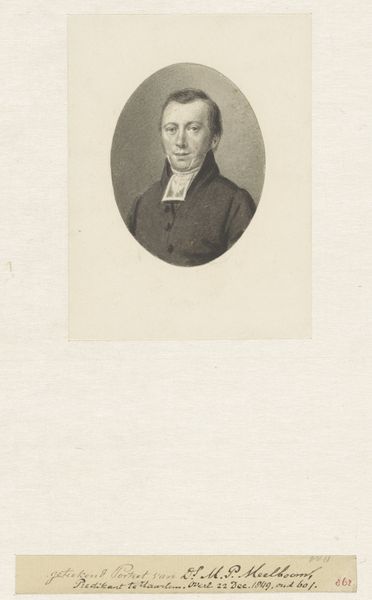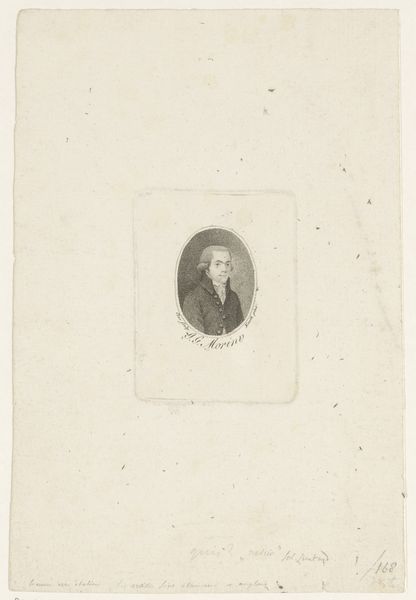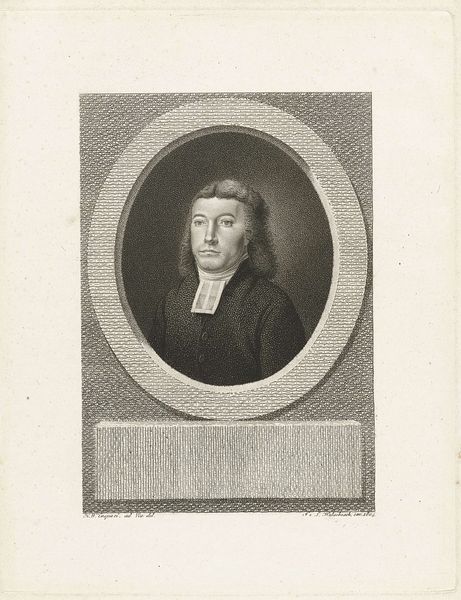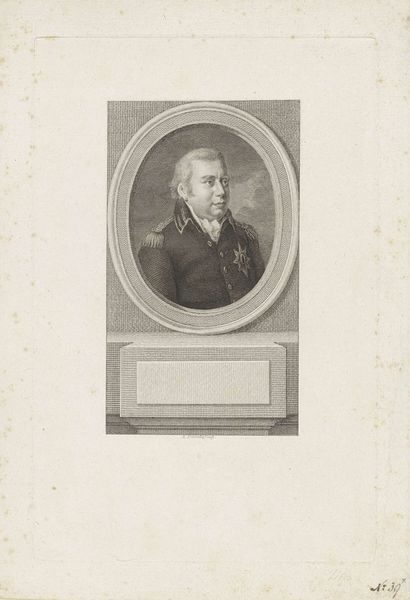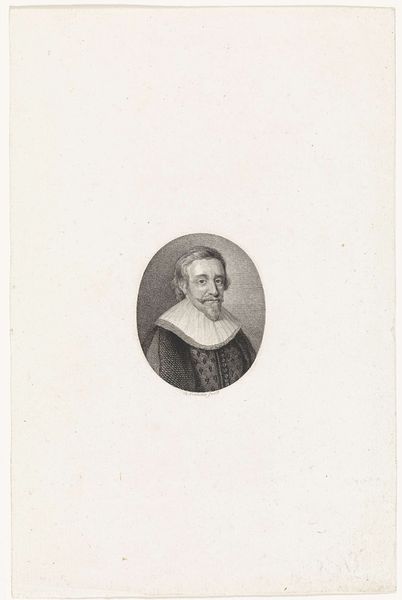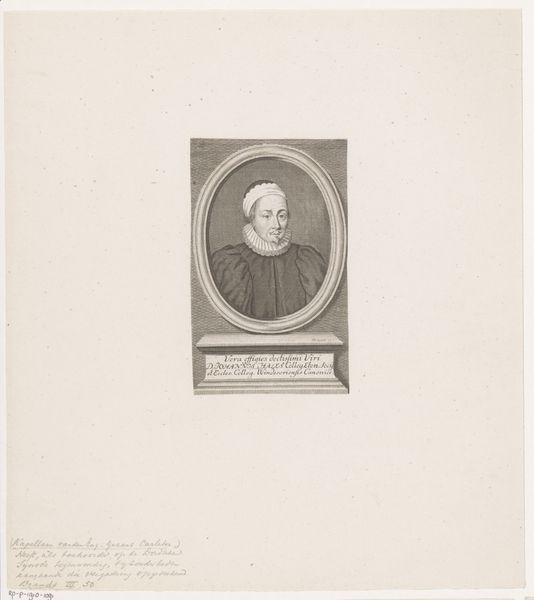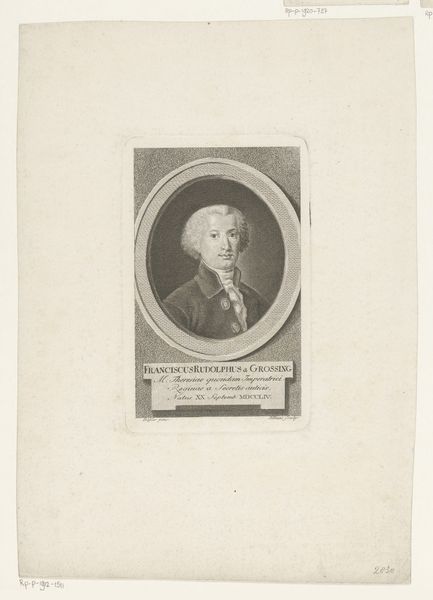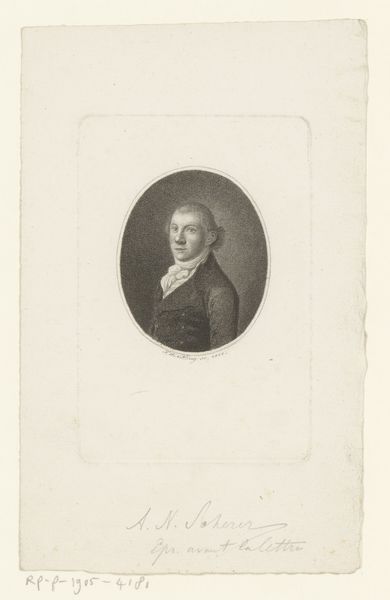
print, engraving
#
portrait
#
neoclacissism
#
aged paper
# print
#
old engraving style
#
engraving
#
realism
Dimensions: height 183 mm, width 144 mm
Copyright: Rijks Museum: Open Domain
Editor: Here we have a print from 1817, "Portret van Willem Gerrit van Doorne," at the Rijksmuseum. It looks like an engraving. There's something about the starkness of the lines that feels very formal and, well, maybe a little severe. What do you see in this portrait? Curator: I see the imprint of social power and religious authority, captured in the visual language of its time. The sitter, likely a man of stature within the church, is presented in a way that upholds a certain patriarchal order. Do you notice how the Neoclassical style, popular at the time, served to legitimize such figures? Editor: The oval frame definitely adds to that sense of formality. Is there something about engravings that lends itself particularly well to this kind of representation? Curator: Absolutely. Engraving, as a reproductive medium, facilitated the dissemination of these images. They acted almost like visual propaganda, reinforcing existing hierarchies. Think about the historical context: What ideologies were prevalent? Who benefited from this portrayal? Editor: So, it’s not just about capturing a likeness, but also about reinforcing a specific image of power and respectability? Curator: Precisely. It's a carefully constructed image that participates in the broader power structures of the 19th century. It prompts us to question who gets represented, how, and why. Editor: I hadn’t considered that angle. It makes me think differently about the role of portraiture back then, as more than just commemoration. Curator: And what does it make you consider about portraiture today? Perhaps some of these mechanics are still in play. Editor: Wow, that really puts things in perspective! Curator: Indeed. The art of seeing is, fundamentally, about questioning what is *not* immediately visible.
Comments
No comments
Be the first to comment and join the conversation on the ultimate creative platform.

